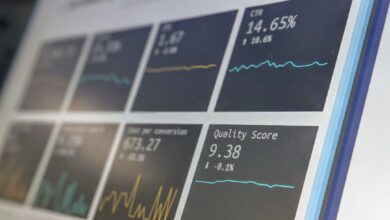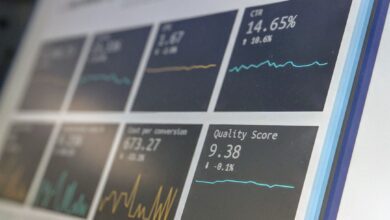Mastering Options Trading: Essential Strategies and Risk Management for Successful Traders

Options trading has emerged as a powerful tool for traders seeking to diversify their portfolios and maximize their profits in today’s dynamic financial markets. Unlike traditional stock trading or forex trading, options trading involves trading contracts that grant the right, but not the obligation, to buy or sell assets at a predetermined price within a specified timeframe. This unique characteristic opens up a myriad of trading strategies, allowing both novice and experienced traders to capitalize on market movements, whether they are engaged in day trading, swing trading, or even more complex forms like algorithmic trading and high-frequency trading.
In this article, we will delve into the essential components of options trading, starting with a comprehensive understanding of key concepts and strategies for success. We will also explore the importance of risk management techniques, which are crucial for protecting your investments in any form of trading, be it derivatives trading, commodities trading, or crypto trading. Furthermore, we will analyze how to effectively interpret market trends through technical and fundamental analysis, equipping you with the insights needed to make informed trading decisions. Whether you are a beginner looking to start your journey in options trading or a seasoned trader aiming to refine your approach, this guide will provide you with valuable knowledge and practical strategies to enhance your trading success.
- 1. Understanding Options Trading: Key Concepts and Strategies for Success
- 2. Risk Management in Options Trading: Essential Techniques for Every Trader
- 3. Analyzing Market Trends: Technical and Fundamental Analysis in Options Trading
1. Understanding Options Trading: Key Concepts and Strategies for Success
Understanding options trading involves grasping several key concepts and strategies that can lead to success in this complex financial market. Options trading is a form of derivatives trading, where traders engage with contracts that grant them the right but not the obligation to buy or sell an underlying asset at a predetermined price before a specified expiration date. This unique feature allows for flexibility in various market conditions, making options trading an appealing choice for many investors.
One of the foundational concepts in options trading is understanding the different types of options: call options and put options. A call option gives the holder the right to buy an asset, while a put option provides the right to sell. Traders often use these options in various strategies to hedge against potential losses or to speculate on price movements.
Effective risk management is crucial in options trading, as the leverage involved can amplify both gains and losses. Traders should carefully assess their risk tolerance and utilize strategies such as stop-loss orders to protect their investments. Additionally, understanding market analysis—both technical and fundamental—is vital. Technical analysis involves studying price charts and trading volumes to identify trends and patterns, while fundamental analysis focuses on the underlying factors that may affect the asset's value.
Options trading can also be integrated into broader trading strategies, including day trading, swing trading, and even crypto trading. For instance, traders may use options to leverage their positions in stock trading or commodities trading, allowing them to maximize potential returns with a relatively smaller capital outlay.
Moreover, options trading can be approached through various trading platforms that offer unique features. Online trading platforms often provide tools for algorithmic trading and high-frequency trading, enhancing the trading experience for those who wish to execute trades quickly based on market conditions. Copy trading and social trading platforms allow less experienced traders to follow the strategies of seasoned investors, providing a learning opportunity while they engage in options trading.
Another strategy traders might consider is arbitrage trading, where they capitalize on price discrepancies between different markets. This is particularly relevant in energy trading or index trading, where fluctuations can create profitable opportunities.
In conclusion, successful options trading relies on a strong understanding of its key concepts, effective risk management practices, and the application of various trading strategies. By employing market analysis and leveraging the capabilities of online trading platforms, traders can navigate the complexities of options, maximizing their potential in the dynamic world of trading.
2. Risk Management in Options Trading: Essential Techniques for Every Trader
Effective risk management is a crucial aspect of options trading that every trader should prioritize to protect their investments and enhance their overall trading performance. Options trading, like other forms of trading such as forex trading, stock trading, or commodities trading, carries inherent risks due to the leverage involved. Here are essential techniques that can help traders manage these risks effectively.
1. **Understand Leverage and Margin Trading:** Options often involve leverage, which means you can control a larger position with a smaller amount of capital. While this can amplify profits, it can also increase losses. Therefore, it's vital to fully understand how margin trading works and to use leverage cautiously. Setting strict limits on the amount of leverage used can help mitigate risks.
2. **Utilize Stop-Loss Orders:** Implementing stop-loss orders is a fundamental practice in risk management. By setting predetermined exit points for trades, traders can limit potential losses if the market moves against them. This technique is applicable across various trading strategies, including day trading, swing trading, and even high-frequency trading.
3. **Diversify Your Portfolio:** Just as in other forms of trading such as crypto trading and index trading, diversification in options trading can help spread risk. By investing in a variety of options across different asset classes—whether it's energy trading, derivatives trading, or binary options—traders can reduce the impact of a poor-performing asset on their overall portfolio.
4. **Implement Position Sizing:** Proper position sizing is essential to managing risk effectively. Traders should determine the percentage of their total capital to risk on each trade based on their risk tolerance. This strategy helps ensure that no single trade can significantly impact the overall account balance.
5. **Conduct Thorough Market Analysis:** Whether through technical analysis or fundamental analysis, understanding market conditions is vital in options trading. Traders should stay informed about market trends, economic indicators, and events that could affect their trades. This knowledge can help in making informed decisions and adjusting strategies as necessary to manage risk.
6. **Emphasize Trading Psychology:** Managing emotions is crucial in trading. Fear and greed can lead to poor decision-making and increased risk. Incorporating trading psychology into risk management strategies helps traders maintain discipline and avoid emotional trading, which can lead to significant losses.
7. **Employ Hedging Strategies:** Hedging is a common risk management technique used in options trading. By taking positions in derivatives that will offset potential losses in other investments, traders can protect their portfolios. This could involve using strategies like protective puts or covered calls to safeguard against adverse market movements.
In conclusion, effective risk management in options trading involves a combination of understanding leverage, utilizing stop-loss orders, diversifying portfolios, conducting market analysis, and maintaining discipline through trading psychology. By applying these techniques, traders can navigate the complexities of options trading while safeguarding their investments and improving their chances of success.
3. Analyzing Market Trends: Technical and Fundamental Analysis in Options Trading
In the world of options trading, effectively analyzing market trends is crucial for making informed decisions and maximizing potential profits. Traders often utilize two primary approaches: technical analysis and fundamental analysis. Each method serves a unique purpose and can significantly impact trading strategies.
Technical analysis involves evaluating historical price movements and trading volume to identify patterns and trends. By using various charting tools and indicators, traders can determine entry and exit points for their options trades. Common technical indicators include moving averages, Relative Strength Index (RSI), and Bollinger Bands. These tools help traders identify market sentiments and potential price reversals, making them essential for day trading, swing trading, and even high-frequency trading strategies. For instance, a trader might analyze a stock's chart to spot bullish patterns before executing a call option.
On the other hand, fundamental analysis focuses on the underlying factors that influence asset prices. This method requires traders to assess economic indicators, company performance, and market news. For options trading, understanding earnings reports, interest rates, and geopolitical events is crucial. By grasping these fundamentals, traders can predict how specific events might affect the stock or commodity markets and adjust their options strategies accordingly. For example, a trader might choose to buy put options ahead of an earnings report if they anticipate poor performance based on market trends.
Combining technical and fundamental analysis can provide a more holistic view of the market, enhancing risk management and overall trading success. Traders can use this integrated approach to develop robust trading strategies that cater to their unique trading styles, whether they engage in forex trading, commodities trading, or crypto trading.
Ultimately, successful options trading hinges on understanding market dynamics through both technical and fundamental lenses. By leveraging these analytical methods, traders can improve their decision-making processes, refine their trading psychology, and optimize their use of leverage and margin trading within their portfolios. Whether participating in derivatives trading or exploring options within algorithmic trading frameworks, a solid grasp of market analysis is vital for navigating the complexities of today's trading landscape.
In conclusion, options trading presents a dynamic opportunity for traders to engage in the financial markets, whether through stock trading, forex trading, or commodities trading. By understanding the key concepts and strategies outlined in this article, traders can navigate the complexities of options trading with greater confidence. Effective risk management techniques are essential to safeguard investments and ensure long-term success in this high-stakes environment.
Additionally, employing both technical and fundamental analysis allows traders to make informed decisions based on market trends, enhancing their trading psychology and overall strategy. As you explore various trading styles—be it day trading, swing trading, or even algorithmic trading—remember that continuous learning and adaptation are crucial. Embrace the diverse avenues available, from binary options to futures trading, and leverage online trading platforms to refine your approach.
By integrating these insights into your trading plan, you can better position yourself to capitalize on market opportunities while managing risk effectively. Whether you're involved in index trading, crypto trading, or energy trading, the principles of options trading can prove invaluable to your overall trading strategy. Ultimately, mastering the art of options trading requires dedication, research, and a willingness to adapt to the ever-changing markets.
References:
[Insert list of sources used in the article here]




